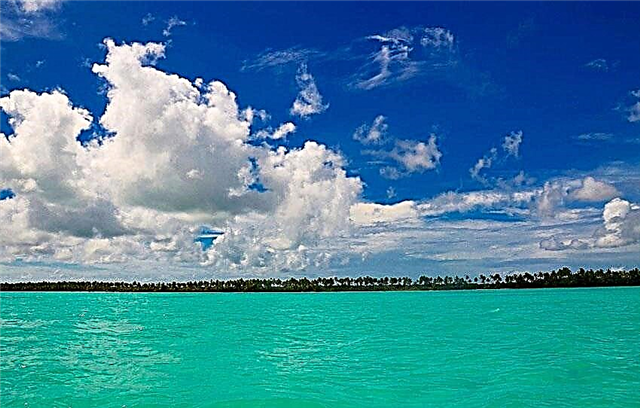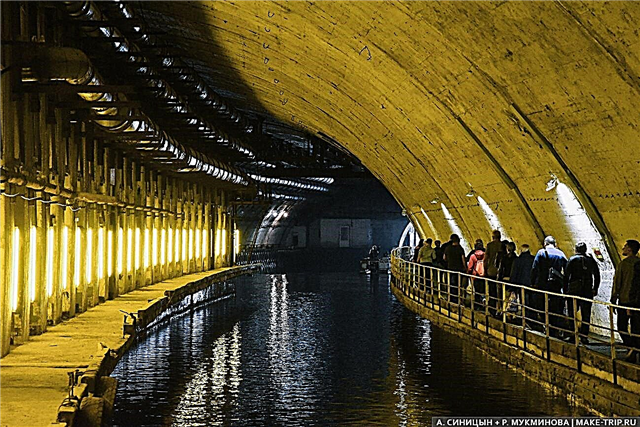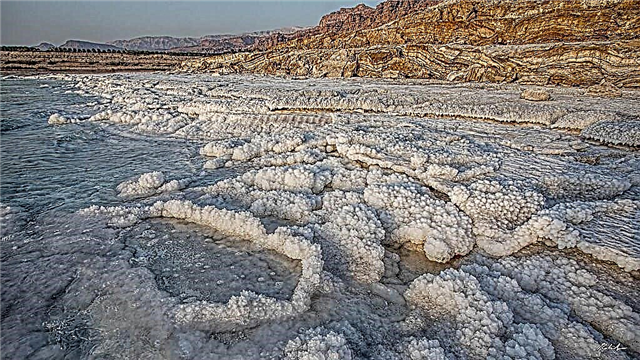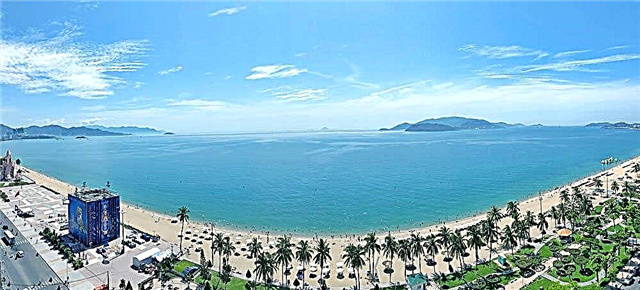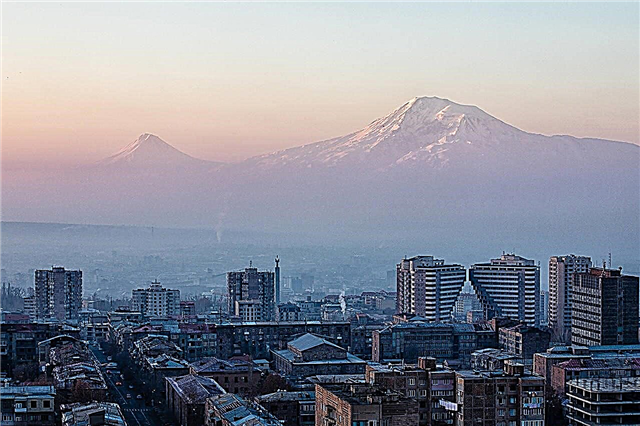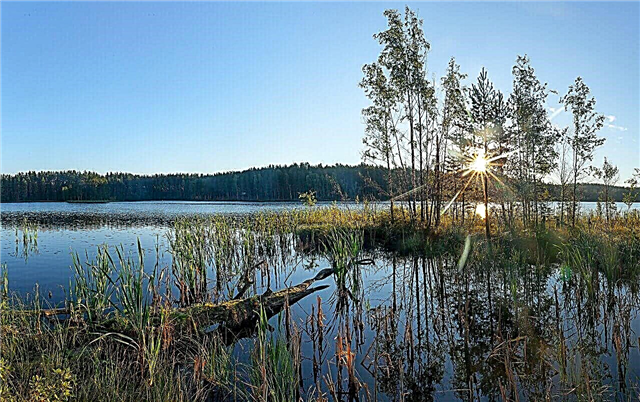The Leningrad Region is an important region in the North-West of Russia, completely located on the territory of the Russian Plain. This area is characterized by coniferous and mixed forests, a large water network of rivers, lakes and swamps. The reliefs in some places are of ancient glacial origin, which is of particular value. The variety of landscapes provides habitats for many animals, forest and water birds. The main task today is to preserve these beauties.
To date, 29 reserves have been created on the territory of the region, one of them, Mshinskoe swamp, is a federal complex reserve. Many specially protected areas are located on the coast of the Gulf of Finland. These are unique places for the conservation of marine vegetation and water birds. Much work is being done to preserve the Baltic seal, whose population in the Gulf of Finland numbers 200 individuals.
The most important sanctuaries of the Leningrad region
List of operating reserves located in the region.
Mshinskoe swamp
The swamp, about 8,000 years old, is a federal wildlife sanctuary. It is located in two districts of the Leningrad Region: Gatchinsky and Luga. Wetlands are considered particularly valuable landscapes. The reserve includes several lakes, raised bogs, river sources - a natural habitat for rare and endangered birds. There are bitterns, curlews, black and white storks, osprey, and several rare plants. Scientific work is carried out on the territory, tourist trips are organized.

Lindulovskaya grove
State Botanical Sanctuary, created with the aim of protecting and maintaining the unique plantations of Siberian larch. The first planting of seeds, delivered from the Arkhangelsk region, was made here in 1738 by order of Peter I. The grove is located on the territory of the Vyborg region, in the valley of the Roshchinka river (formerly Lindulovka). It is part of the UNESCO-protected Historic Center of St. Petersburg.

Preserve "Gladyshevsky"
The regional reserve is located on the territory of St. Petersburg and the Leningrad region. Includes: Gladyshevskoe Lake, the Gladyshevka, Roshchinka and Chernaya rivers, part of the water area of the Gulf of Finland. On the rapids of Gladyshevka and Roshchinka, there is an endangered species of mollusks - pearl mussel. The lake and rivers are the spawning grounds for salmon fish. There are dipper, flying squirrel, wild boar, elk, ferret and many other species of animals.

Anisimov Lakes
The reserve is located in the north of the Karelian Isthmus. It consists of four lakes, connected by streams and flowing into the Mikhailovka River. The peculiarity of the landscape is selga, high ridges processed by the glacier, from 3 to 25 meters in height. Rare landscapes, sheer slopes of selga, old-growth pine and spruce forests are under protection. 13 species of rare birds from the Red Data Book are found here.

Reserve "Lisinsky"
At the beginning of the 19th century, this territory was the "Lisinsk" state dacha, the favorite hunting ground of Nicholas II. A hunting palace, an educational building of the Forestry Institute, and a church were built here. For 200 years of scientific work, the best objects of forestry have been grown in the reserve. An arboretum with plants from different countries was founded in Lisino since 1850. Both typical animals of local forests and rare species are found: nocturnal, flying squirrel, river otter.

"White stone"
The second name of this reserve is Smooth Moss. This is the name of the swamp, the center of which is somewhat raised above the outskirts and is covered with mosses. On its northern outskirts, there is a large granite boulder that gave the name to this place. Numerous islands in the swamp, covered with low vegetation, give it a picturesque look. The swamp and its ecosystem are considered to be the benchmark for the area. It is located in the Luga region, in the vicinity of the village of Oredezh.

Lammin-Suo Swamp
The reserve includes a bog typical for the Karelian Isthmus and the adjacent territory covered with sandy hills up to 150 meters high and deep hollows. Once there was an ancient lake, two deep lakes in the center of the swamp (up to 12 meters deep) have survived from it. Since 1950, a hydrological station has been operating here, studying the water system. The reserve is located 10 km from the village of Roshchino, Vyborgsky district.

"Birch Islands"
In the vicinity of the city of Primorsk, Vyborgsky District, there are places of unprecedented beauty. This is a whole archipelago in the Gulf of Finland. It consists of three large and about 50 small islands. Here you can see sandy beaches, dunes, rocky ridges, all types of swamps of these places, pine and relict deciduous forests. Rare species of flora and fauna are under protection. The islands are of key importance for the conservation of the Baltic ringed seal population.

"Vyaryamyanselka Ridge"
The ridge was created by the activity of the glacier and is the largest of its kind in the North-West of our country. It is located to the south of lakes Vuoksa and Sukhodolskoe. There are about 30 lakes on the territory of the reserve, the Volchya river flows. Almost all types of pine forests of the Leningrad Region are represented here, rare plants are found. During the migration season, flocks of water birds stop at the lakes.

Reserve "Spring"
A group of 20 wooded rocky islands is located in the southeast of the Vyborg Bay. The islands themselves, as well as the mainland part of the coast, are included in the regional reserve. On the largest islands, Vesenny and Teply, there are 20-meter oaks and lindens, some of which are 100 years old. About 70 species of birds, both forest and aquatic, nest in this natural area. And in May, hundreds of thousands of Arctic ducks and geese can be seen flying over the reserve.

Reserve "Vyborgsky"
The territory includes the northern side of the Kiperort Peninsula, the water area of the Klyuchevskaya Bay and about 500 islands in the Vyborg Bay. The largest of them are: Lisiy, Shkolny and Zaurazhensky. In the north of the reserve, the islands are mostly rocky, in the south they are gentle. This territory has a large number of bird nesting sites, including 40 species listed in the Red Book. There are also feeding grounds for Baltic seals and gray seals, and millions of Arctic birds fly over there in spring.

Reserve "Gostilitsky"
The territory is located on the outskirts of the village of Gostilitsy, Lomonosov district. This reserve is valuable because the southern taiga nemoral-grass forests, indigenous to the Leningrad Region, have been preserved here. This means that spruce and pine forests are accompanied by vegetation typical of deciduous forests. Thanks to the preservation of the ecosystem, a large number of animals typical for the region live here, as well as 12 species of rare and endangered birds.

Oak groves near the village of Velkota
The village has a history of over 500 years, and from time immemorial oak groves have grown around it. Today, such forests are rare for the region, so the forest received the status of a reserve. It is conventionally divided into four zones, in three of them, more elevated, oaks prevail. The fourth part is the site of the former estate of the Blok family. Here several springs fill a karst sinkhole, blocked by a dam, forming a pond. A small waterfall flows from under the dam and gives rise to the Velcotta River.

Reserve "Lebyazhy"
The natural complex is called the village in the Lomonosov region, next to which it is located. It is a wetland on the southern coast of the Gulf of Finland, which has preserved the standard sea landscapes for these places. The region's largest species diversity of plants and animals is noted here, 200 of them are listed in the Red Book. During the spring migration, there are many bird camps in the coastal zone, including swans.

"Kivipark"
The natural area is located 20 km from Vyborg and includes a section of the coast, the villages of Chulkovo and Baltiets, as well as part of the water area of the Gulf of Finland, together with 11 islands. The name comes from the Finnish word "kiwi" - a stone, here you can find blocks of rapakivi, a type of granite typical for these places. The coast is indented with sandy bays with protruding granite selga, where seaside flora and seabirds are especially valuable.

Reserve "Kokkorevsky"
A part of the coastal area of Ladoga, between the villages of Hannibalovka and Kokkarevo, is designated as a specially protected area. It also includes the Kokkorevskoe bog and Lake Shimpalatovskoe. This is the only place where on the Karelian Isthmus there are aspen forests with the participation of linden. The reserve is intended to preserve a plant community that is rare for the region; many rare birds live here.

Reserve "Kotelsky"
The territory stretches for 30 km from the Koporskaya Bay of the Gulf of Finland and includes a chain of 5 lakes connected by channels, surrounding forests, as well as part of the sea area. The lakes lie in the ancient valley of the Luga River, they are enclosed in high banks, filled with clean transparent water, rich in fish. Coniferous forests, with the participation of broad-leaved plants, hazel bushes. They are home to many animals, there are rare species of woodpeckers and flying squirrels.

Reserve "Kurgalsky"
It is located 45 km from the city of Kingisepp and consists of the Kurgalsky Peninsula and the surrounding islands, together with the water area of the Gulf of Finland. There are over 200 species of birds, 750 species of plants and more than 110 species of mosses throughout the territory. This wealth is due to various natural landscapes: spruce and mixed forests, dune pine forests, lakes and swamps, the sea coast. The golden eagle, peregrine falcon, ringed seal and gray seal are under special protection.

Lake Shallow
The reserve includes two lakes connected by a river channel: Lugovoye and Melkovodnoye. They are located in the Vyborg district, near the villages of Ozerskoye and Balakhnovo. The lakes are shallow, with many islands and aquatic vegetation. Due to this, a lot of fish, waterfowl, beavers, muskrat and mink live here. On the flight during the period of seasonal migration, migratory birds arrange parking.

"Cancer lakes"
The complex of lakes is located in the Vyborg district, between the villages of Granitnoye, Klimovo and Streltsovo. It includes Okhotnichye, as well as the Big and Small Crayfish lakes, which were formed as a result of the shallowing of Lake Yayuryapäänjärvi. At the end of the 19th century, a channel was dug here, after which the area was reduced by 75%. As a result of waterlogging, the area attracted many ducks, swans, and terns. More than 200 bird species can be found here.

"North of the Mshinsky swamp"
The interfluve of Yaschera and Kamenka, adjacent in the north to a large reserve in the Mshinsky swamp, has been set aside as a separate natural area. A unique wetland system is under protection here. It ensures the water balance in the Mshinsky bog. More than 40% of the reserve is occupied by raised bogs - the habitat of black grouse and sandpipers. Elk, wild boar, hare, fox, marten are found in the forests.

Wildlife Sanctuary "Syabersky"
The relief in this area is formed by the movement of the glacier; in large hollows between the sandy hills, there are lakes connected by channels. One of the largest - Lake Syabero gave its name to the reserve. The hills are covered with pine forests, spruce forests are found in the lowlands. In the forests there are rare herbaceous plants, and in the low-lying bogs there are several types of orchids. Osprey, black stork, kite, European roe deer live here.

Preserve "Cheremenetsky"
The reserve includes two lakes, Vrevo and Cheremenetskoye, as well as the adjacent territory. The lakes are elongated, 13-15 km long and up to 3 km wide. They lie in ancient basins of preglacial origin. There are many springs on their banks, making the water very clean. There are several settlements here, old estates have been preserved, and a man's monastery operates.

"Pure moss"
A large swamp system 4 km from the city of Kirishi is of particular value as a reference example of the untouched vegetation typical of the region. There are 3 species of Red Book plants and 14 species of birds, including osprey, black stork, and ptarmigan. Swamps play an important role in the water supply of the Volkhov tributaries. For more than 50 years, research work has been carried out here at the water station "Villi Gory".

"Shalovo-Perechitsky"
In the Luga district, not far from the town of Luga, there are very picturesque places. The Luga River bends beautifully in its middle course and takes in Oredezh and Perevoloka. Mesopotamia is mainly covered with sandy hills, as well as lakes and marshes in the lowlands. Pine forests with the participation of oak, linden and elm are also called flower beds, for the abundance of ornamental vegetation. Rare birds and roe deer are found here.


